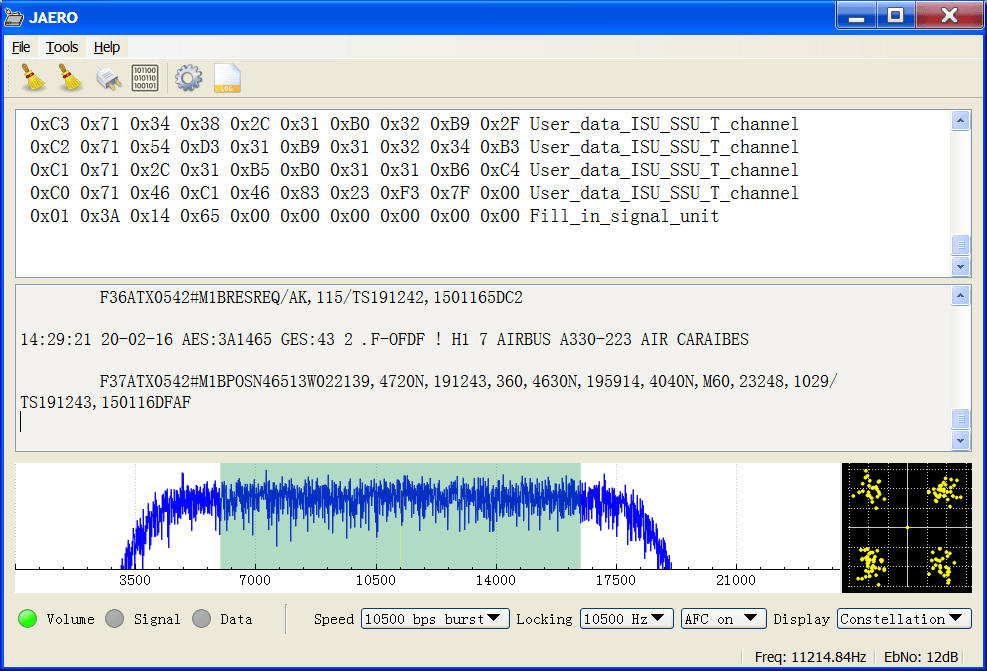Receiving C-Band AERO Signals
Jonti, the programmer of JAERO has recently updated his software to version 1.04 which can now be used to decode C-Band AERO signals. Previously only L-Band (1.5 GHz) AERO signals could be decoded with JAERO. C-Band signals are much harder to receive as they are at 3.6 GHz, so require an LNB, and they are also much weaker so require a large dish (at least about 1.8 meters or larger in diameter). However, the interest in them is that C-Band AERO signals arguably contain more interesting information that the L-Band AERO data. They contain actual aircraft position data which would allow you to plot the locations of all planes using that satellite. About the information that can be received Jonti writes:
The L band Aero signals (around 1.54GHz) that everyone has been decoding lately using JAERO are the very strong signals being sent from the satellites to the airplanes, this is the information that is being sent from the GESs (ground earth stations i.e. the people on the ground) to the AESs (air earth stations i.e. the people in the airplanes). A modified 2cm GPS antenna, an LNA (Low Noise Amplifiers) or two, and an SDR receiver is enough to receive such signals.
Receiving the information going the other way around from the people in the airplanes to the people on the ground is a lot more challenging. This AES to GES information first gets transmitted from the airplanes around 1.6 GHz to the satellites which is then relayed back down to the GES people on the C-band around 3.6 GHz. that means to receive information from the airplanes the only practical option is to receive the 3.6 GHz frequencies. This is above any SDR receiver I know of. To make things worse, I believe the signals are 11dB weaker than the L band ones that everyone has been receiving. Complicating matters further the signals are transmitted in bursts and each burst is dependent on the airplane’s L band transmitter. So a weaker L band transmitter on a plane produces a weaker C-band burst transmission, likewise any frequency offset of an L band transmitter on the plane produces a frequency offset on the C-band.
So what’s so attractive about C-band Aero signals?
Two reasons spring to mind. The first is the challenge of receiving and demodulating it and the second is this information contains plane location information like ADS-B (Automatic dependent surveillance – broadcast) so you can produce pretty pictures of where all the planes are in the world.

Works great on 10.5k here using a modified Worldspcae antenna and just a standard Sky dish
On the C-band ?